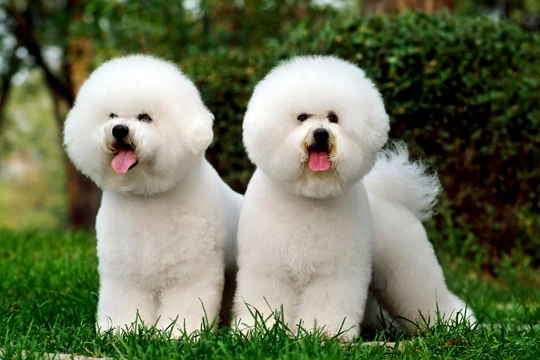
How to care for your Bichon Frise’s coat
The Bichon Frise is one of the UK’s most popular dog breeds – in fact, they’re the 26th most popular overall, out of a total of 241 different dog breeds and types. They are one of a number of small, white and very fluffy dog breeds that fall into the toy dog grouping, and they’re one of the most popular lapdog breeds thanks to their loving, affectionate natures and compact size.
Something else that helps to make the breed so popular is the Bichon coat – their fur is tightly curled and low shedding, and most of the hair that they do shed is caught within the curls of their coat rather than being dropped around the house. This means that they’re particularly popular with dog owners who often find themselves to be allergic to dogs, because they shed less dander that can trigger allergies.
For this reason, they are sometimes referred to as hypoallergenic dogs – and while there are no truly hypoallergenic dog breeds, the Bichon Frise is as close as any! However, this low shedding, low allergy coat itself requires quite a lot of care and maintenance to keep it in good condition, because they don’t shed their loose hair in the normal way.
In this article, we will provide a short basic introduction to caring for the Bichon Frise coat, in order to keep their coat and skin healthy and in good condition. Read on to learn more about the type of care that the Bichon Frise coat requires.
Brushing and combing at home
Because shed Bichon Frise hair doesn’t fall out of the coat, it becomes caught up in the rest of their fur which can quickly lead to tangles, knots and matting if you don’t keep on top of things.
This means that your Bichon Frise will need to be brushed and groomed more or less daily, and you should begin doing this with your Bichon puppy more or less as soon as you bring them home so that they get used to it and accept the process.
A comb with a pointed end, and a pin brush are the best tools to use, and you should ensure that these tools are the appropriate size for your dog and not too large.
If you brush your Bichon daily knots and mats won’t get a chance to develop, and it is important to comb your dog’s fur right down to the skin, and don’t miss tricky areas like the insides of the legs and under the belly as these areas in particular are prone to matting up.
If you do come across a knot or mat that won’t brush out, the first step is to split and divide it so that it’s loose from the skin, before working it out entirely. Your comb and particularly, the pointed end of the comb is the best choice for this job.
Bathing
If your Bichon Frise goes to a groomer every couple of months, you’re unlikely to need to bathe them at home in the interim. However, if you take care of all of your dog’s coat care needs at home, bathing is something you should undertake regularly, alongside of your regular brushing and grooming routine.
Before you bathe your dog, brush their coat out thoroughly as their hair will stretch somewhat when wet, making it more prone to pulling and breaking when you do brush it. The water can also tighten the curls in your dog’s coat, making it harder to remove mats and knots.
Dry your dog’s coat thoroughly after their bath, ensuring that it is dry right down to the skin and not just on the top layers, and brush it as you go.
Grooming, clipping and trimming
Most Bichons visit a groomer regularly to take care of their bathing and clipping or trimming to give them their distinctive neat and tidy hairstyle.
This may involve clipping a lot of their coat off to achieve a short, easy to care for style or simply trimming it to keep it neat but rather longer. Whether your dog’s coat is trimmed or clipped, the finishing touches and fine detailing will need to be achieved manually with scissors, to produce the rounded curves that is the signature of the breed’s coat, and to remove some of the often thick, wiry fur between their toes.
The groomer may also thin out some of the hair on the insides of their ears too, and tidy up your dog’s beard to make them look neat – and because the Bichon beard often traps a lot of food and muck!
The correct texture for the Bichon Frise coat
Bichon Frises have a double-layered coat, with the topcoat being comprised of the slightly coarse curls that give the breed their appearance, and a soft, very dense undercoat beneath this that provides volume.
While the topcoat itself should feel slightly coarse, it should never be brittle or wiry, or too silky and smooth. If the curls of the topcoat aren’t brushed regularly, they will form very tight curls, which are prone to knotting and that produce a rather different appearance to the wavy, fluffy coat that is the breed’s signature.
If your Bichon’s topcoat is noticeably curled in defined sections, they need to be brushed out!



